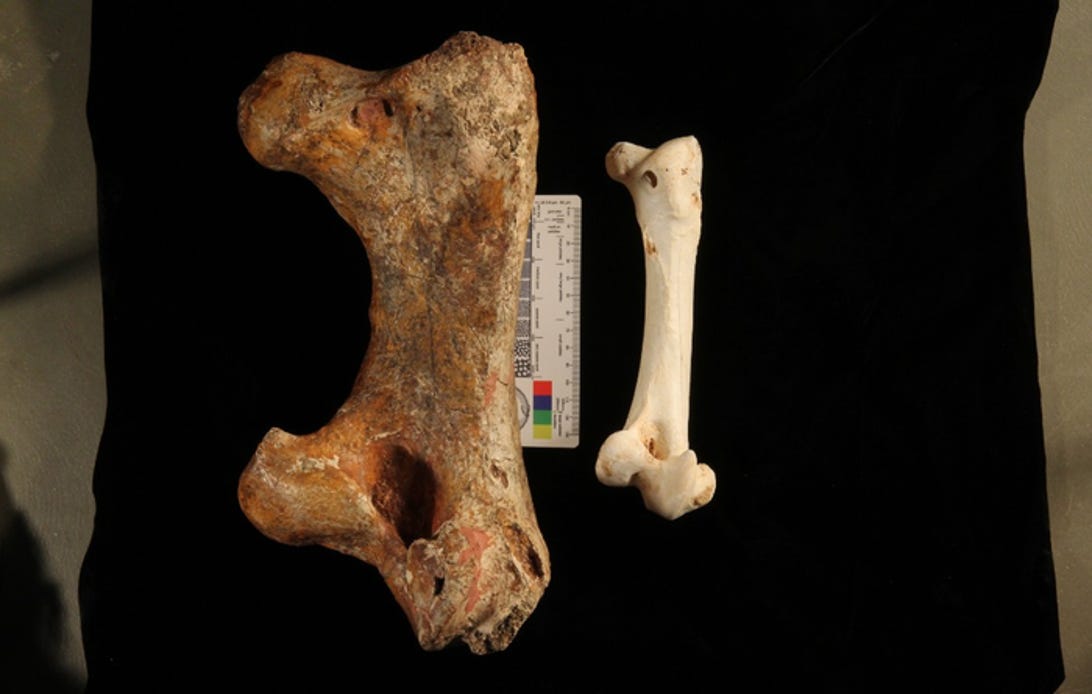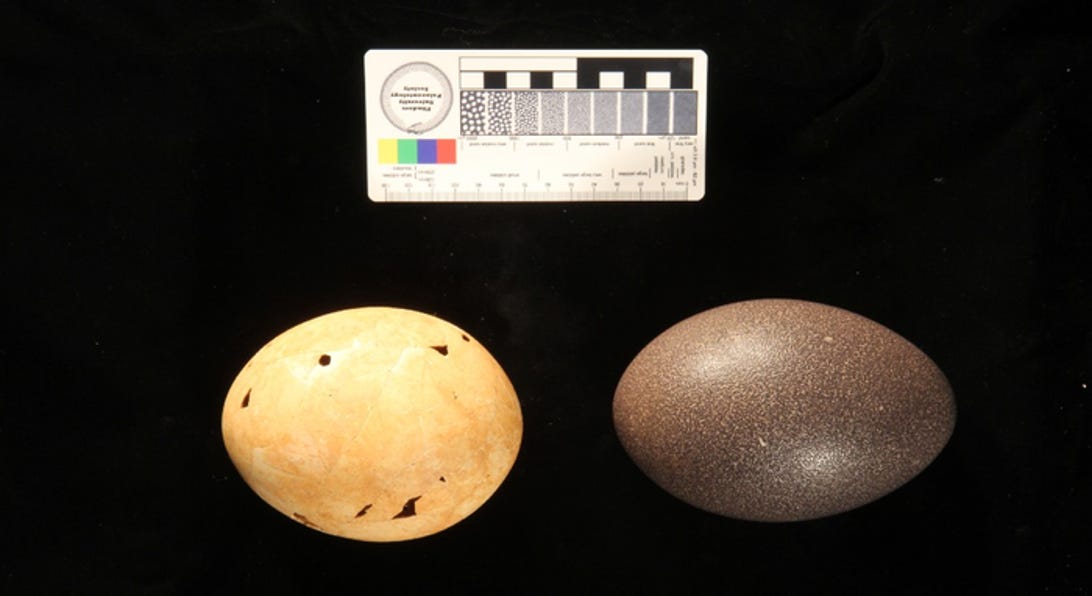Centuries ago, Earth was basically home to a mighty duck gang. Roaming our planet were giant birdlike creatures, larger than an average human and terrifying enough to leave a very hard-core legacy following their ultimate extinction. They’re known simply as the Demon Ducks of Doom.
And these enormous animals definitely live up to their nickname. According to a paper published Wednesday in the journal PNAS, even with death, demon duck antics didn’t stop. Four decades ago, scientists unearthed the remnants of a few massive, prehistoric eggs hidden within southern Australian sand dunes — and since then, the mysterious shells have spurred a heated, ongoing controversy: Who did these eggs belong to?
Well, you guessed it. They’re property of the Demon Ducks of Doom.
More specifically, the new study’s team says, these 50,000-year-old eggs, 20 times heavier than a chicken egg, belonged to the last ducklike member of the demon duck megafauna (also dubbed dromornithids), named Genyornis newtoni. Once upon a time Genyornis was a feathered, flightless, most likely vegetarian leviathan that stood about six and a half feet tall and weighed in at 440 pounds.


On the right is a femur from an emu, and on the left is a femur from Genyornis newtoni.
Trevor Worthy“They can only be of the Genyornis. As such, we have laid to rest a very long and heated debate about the origin of these eggs,” Matthew Collins, study co-author and professor at the University of Copenhagen, said in a statement.
Until now — though some researchers worldwide maintained that these huge eggs must’ve come from Genyornis — others believed they came from a feebler, chickenlike, large-footed bird called Progura, which is part of the megapode classification and weighed only between 11 and 15 pounds. Just a baby, you might say, compared with Genyornis. “However, our analysis of protein sequences from the eggs clearly shows that the eggshells cannot come from megapodes and the Progura bird,” Josefin Stiller, a researcher on the study and an assistant professor at the University of Copenhagen, said in a statement.
In other words, precision DNA analysis was necessary to finally settle the question of which bird to credit with the priceless eggs.


To the right is an emu egg and to the left is the ancient egg now traced to the demon duck of doom, Genyornis newtoni. It weighs 20 times more than an average chicken egg.
Trevor WorthyBasically, the study researchers pulverized a bunch of proteins found in the discovered eggshells with bleach. They then took the resulting fragments, assembled them in the correct order and used artificial intelligence to detect genetic codes that could be compared with those of over 350 living bird species.
“We used our data from the B10K project, which currently contains genomes for all major bird lineages, to reconstruct which bird group the extinct bird likely belonged to,” Stiller said.
From there, the team simply found that the eggs couldn’t have been laid by a megapode, and therefore couldn’t belong to the chicken doppelganger Progura. “We are thrilled to have conducted an interdisciplinary study in which we used protein sequence analysis to shed light on animal evolution,” Collins said.
Plus, the connection between these eggshells and the fearsome Genyornis might even help scientists understand human evolution. Particularly because other studies have shown that prehistoric humans would cook and eat the Genyornis’ cantaloupe-size eggs, the team’s new details provide “a more nuanced understanding of the modes of interactions between humans and their environment,” the study says.
That could include extinction dates of the species, and perhaps even the role of humans in its demise, because people preyed on the bird crew’s eggs for food.
Nonetheless, according to the study authors, at the very least we now know that “the controversy over the taxonomic identity of the eggs exploited by Australia’s first people around 50,000 years ago is resolved.” Demon duck games may have reached their final curtain, at last.


